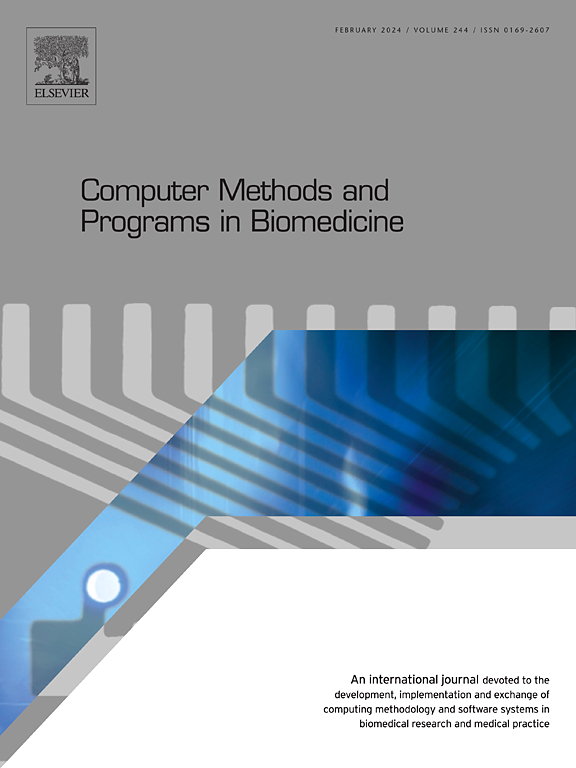Breaking through scattering: The H-Net CNN model for image retrieval
IF 4.9
2区 医学
Q1 COMPUTER SCIENCE, INTERDISCIPLINARY APPLICATIONS
引用次数: 0
Abstract
Background:
In scattering media, traditional optical imaging techniques often find it significantly challenging to accurately reconstruct images owing to rapid light scattering. Thus, to address this problem, we propose a convolutional neural network architecture called H-Net, which is specifically designed to recover structural information from images distorted by scattering media.
Method:
Our approach involves the use of dilated convolutions to capture local and global features of the distorted images, allowing for the effective reconstruction of the underlying structures. First, we developed a diffuse image dataset by projecting handwritten numbers through diffusers with different thicknesses, capturing the resulting distorted images. Second, we generated a synthetic speckle images dataset, composed of simulated speckle patterns. These datasets were designed to train the model to recover structures within scattering media. To evaluate the model’s performance, we calculated the Structural Similarity Measure Index between the model’s predictions and the original images on unseen data.
Result:
This proposed architecture achieves reconstructions with an average structural similarity index measure of 0.8 while maintaining low computational costs.
Conclusion:
The results of this study indicate that H-Net offers an alternative to more complex and computationally expensive models, providing efficient and reliable image reconstruction in scattering media.

突破散射:H-Net CNN图像检索模型
背景:在散射介质中,由于光的快速散射,传统的光学成像技术往往难以准确地重建图像。因此,为了解决这个问题,我们提出了一个名为H-Net的卷积神经网络架构,专门用于从散射介质扭曲的图像中恢复结构信息。方法:我们的方法包括使用扩张卷积来捕获扭曲图像的局部和全局特征,从而有效地重建底层结构。首先,我们开发了一个漫射图像数据集,通过不同厚度的漫射器投影手写数字,捕获由此产生的扭曲图像。其次,我们生成了一个由模拟散斑图案组成的合成散斑图像数据集。这些数据集旨在训练模型以恢复散射介质中的结构。为了评估模型的性能,我们计算了模型预测与原始图像在未见数据上的结构相似性度量指数。结果:该架构在保持较低的计算成本的同时,实现了平均结构相似指数为0.8的重构。结论:本研究的结果表明,H-Net提供了一种替代更复杂和计算成本高的模型,在散射介质中提供了高效可靠的图像重建。
本文章由计算机程序翻译,如有差异,请以英文原文为准。
求助全文
约1分钟内获得全文
求助全文
来源期刊

Computer methods and programs in biomedicine
工程技术-工程:生物医学
CiteScore
12.30
自引率
6.60%
发文量
601
审稿时长
135 days
期刊介绍:
To encourage the development of formal computing methods, and their application in biomedical research and medical practice, by illustration of fundamental principles in biomedical informatics research; to stimulate basic research into application software design; to report the state of research of biomedical information processing projects; to report new computer methodologies applied in biomedical areas; the eventual distribution of demonstrable software to avoid duplication of effort; to provide a forum for discussion and improvement of existing software; to optimize contact between national organizations and regional user groups by promoting an international exchange of information on formal methods, standards and software in biomedicine.
Computer Methods and Programs in Biomedicine covers computing methodology and software systems derived from computing science for implementation in all aspects of biomedical research and medical practice. It is designed to serve: biochemists; biologists; geneticists; immunologists; neuroscientists; pharmacologists; toxicologists; clinicians; epidemiologists; psychiatrists; psychologists; cardiologists; chemists; (radio)physicists; computer scientists; programmers and systems analysts; biomedical, clinical, electrical and other engineers; teachers of medical informatics and users of educational software.
 求助内容:
求助内容: 应助结果提醒方式:
应助结果提醒方式:


